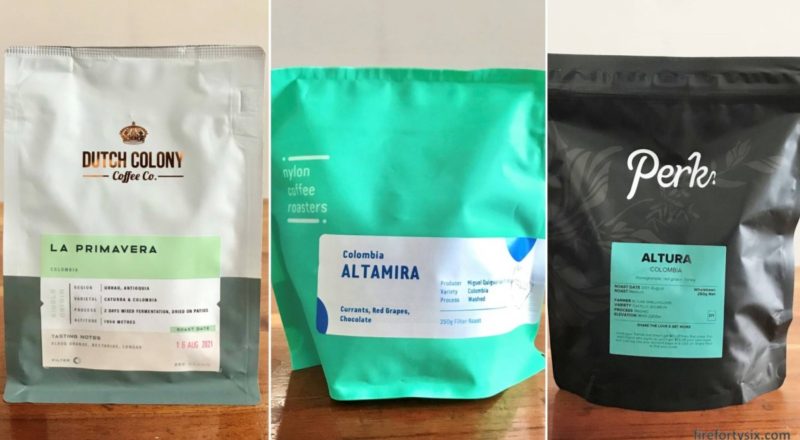The Wife and I are addicted to 1,3,7-Trimethylxanthine, and we have been for many decades now.
If the name is unfamiliar, perhaps you might recognise it by its chemical formula C8H10N4O2.
No?
Maybe looking at its molecular structure might help.

Still no?
There’s a good chance that you’re addicted to it too, or know someone who is.
It’s the active compound in one of the world’s favourite hot beverage, and Colombia is a leading exporter of the crop that’s used to make it.
No, not that crop.
I’m referring to caffeine, the magical ingredient that makes coffee so addictive.
We’ve only recently discovered Colombian coffee, and it has already become our second most favourite single-origin, after Ethiopia.
The very first bag of Colombian coffee I tried was from Nylon Coffee Roasters, but it wasn’t something that I had planned to get when I entered the shop.
They had run out of their Ethiopian beans, and in fact, were running out of *all* their beans due to global shipping bottlenecks.
So, I grabbed a bag each of whatever they had left on their shelves, and one of them was the Colombia Altamira, which was packed in a pretty turquoise bag.

The first cup I brewed was one of the best tasting coffees that we’ve ever had. It was full-bodied with strong Ribena notes and a pleasant and lingering aftertaste.
I tweaked my brewing variables further and managed to extract an even better cup that had a brighter flavour, with tasting notes that were close to those stated on the bag. We would definitely buy this bag again, when Nylon manages to re-stock and roast a new batch.
Colombian coffee was now officially on our hit list and when I saw some at Dutch Colony Coffee, I quickly bought a bag of their La Primavera.

I’ve heard of Dutch Colony before but I haven’t had the chance to try them yet, so even though they were carrying three different bags of Colombian coffee, I only got one.
The tasting notes on the bag stated “blood orange, nectarine and longan”, and even though longan was third on the list, it was the dominant flavour that we tasted. The longan scent was even more prominent when I ground my first batch, and it smelled quite wonderful.
The resulting coffee had a good balance of body and flavour and was a tasty cup, although not quite as delicious as the Colombia Altamira. But it was definitely good enough for me to add Dutch Colony into our rotation of local roasters to buy from.
Perk Coffee’s Colombia Altura was the next bag that I opened. We’re still subscribed to their home delivery service and had recently finished their limited release Uganda Engagi, which was okay but not great.

Unfortunately, it was the same situation with the Colombia Altura.
It was a challenge dialing in the beans, and after tweaking grind size and bloom ratio, I still couldn’t get a flavourful and balanced cup.
I even tried immersion brewing without the proper equipment, by first seeping the coffee grounds in a glass jug and then pouring it through my V60 dripper with a paper filter.
The flavours were smoother than my usual percolation brew, but were muted and didn’t taste as “exciting”.
I repeated the immersion + filtering technique with a metal filter instead, which made the flavours bolder, but still not quite as flavourful as my usual Tetsu 4-6 recipe.
So, I guess the Colombia Altura is not going to make a repeat appearance.
I’m still keen to try their Nicaragua La Esperanza (because I haven’t tried Nicaraguan coffee before) and then I’ll decide if we should continue with the subscription.
Despite the not-so-great outcome of the last bag from Perk Coffee, we’re still fans of Colombian beans and we’ll look out for them as we continue on our sampling journey of the many local roasters in Singapore.
